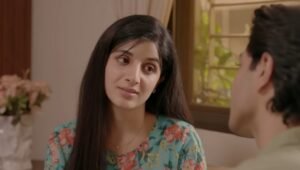The final episode of Main Manto Nahi Hoon arrived with high expectations yet wrapped up the story in a way that left many viewers divided. After months of debate, controversies and strong reactions, the drama finally came to an end with a mix of tragedy, tension and unresolved emotions.
The last episode opened with intense drama as Mehmal and Farhad prepared to marry. The moment quickly turned chaotic when Farhad was suddenly shot by Ifrah’s father, bringing a shocking twist right before the story’s closure. This tragic turn set the emotional tone for the rest of the episode as the characters struggled to process the violence and heartbreak.
A turbulent ending that left viewers thinking
In the final moments, Mehmal and Manto ended up together, closing the long running teacher student relationship that sparked criticism since the beginning. Viewers had strong reactions to this pairing as the power imbalance and uncomfortable dynamic remained central to the story until the end.
The drama carried emotional performances, especially from Sajal Ali, whose portrayal of Mehmal stood out in the final scenes. Yet many felt that the story lost direction midway. And the ending did not tie loose ends in a satisfying way. The narrative shifted away from its original promise and left several character arcs incomplete.
Despite the disappointment, the episode kept the tension high. The emotional weight, unexpected death and controversial relationship delivered a finale that people continue to discuss. It became clear that Main Manto Nahi Hoon will be remembered for its bold themes as well as its uneven storytelling.
Also Read Dhoop Ki Deewar Lands on YouTube as Episode One Gains Thousands of Views
The drama’s conclusion sparked renewed debate about sensitive subjects in television and how they influence viewers. Main Manto Nahi Hoon ended with strong emotions yet also raised questions about narrative choices. And the challenge of portraying complex relationships responsibly.
In the end, the finale stands as a reminder of how powerful the audience’s voice can be when a story takes a direction that feels uncomfortable or unresolved. It also serves as a case study for future productions that aim to explore bold themes with depth and sensitivity.











